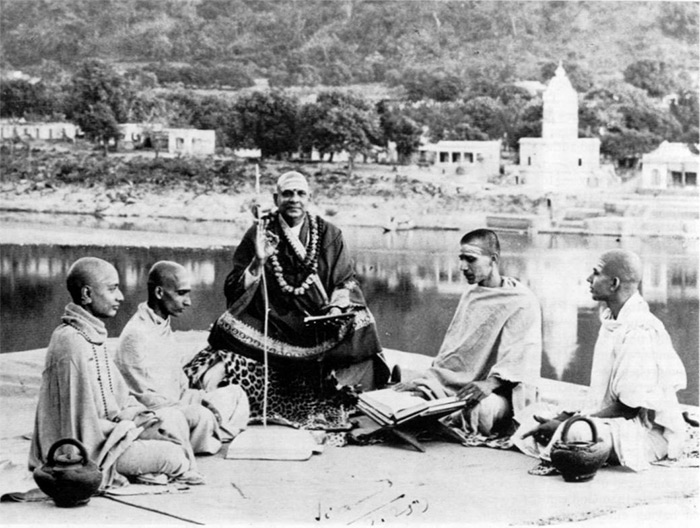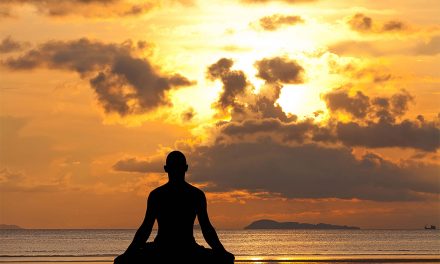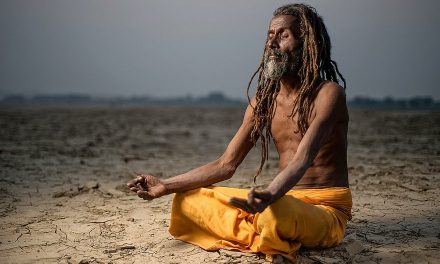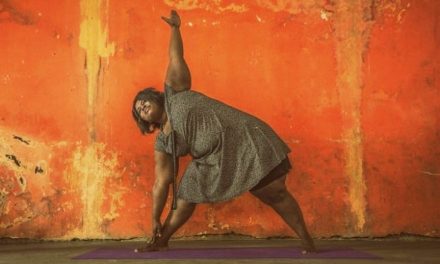“Bahya-abhyantar-stambha-vritti-desaa-kala Sankhyabhih patidtishto deergha-sukshmah.” – Yoga Sutras—Chap. II, Sa. 50
Pranayama is regarded lengthy or subtle according to its three components, the external, the internal and the steady; the retention processes are modified by the regulations of space, time and number.
When the breath is expired, it is Rechaka, the first kind of Pranayama. When the breath is drawn in, it is the second, termed Puraka. When it is suspended, it is the third kind, called Kumbhaka. Kumbhaka is retention of breath. Kumbhaka increases the period of life. It augments the inner spiritual force, vigour and vitality. If you retain the breath for one minute, this one minute is added to your span of life. Yogins by taking the breath to the Brahmarandhra at the top of the head and keeping it there, defeat the Lord of death, Yama, and conquer death. Chang Dev lived for one thousand and four hundred years through the practice of Kumbhaka. Each of these motions in Pranayama, viz., Rechaka, Puraka and Kumbhaka, is regulated by space, time and number.
[wp_ad_camp_1]
By space is meant the inside or outside of the body and the particular length or the breadth and also when the Prana is held in some particular part of the body. During expiration the distance to which breath is thrown outside varies in different individuals. The distance varies during inspiration also. The length of the breath varies in accordance with the pervading Tattva. The length of the breath is respectively 12, 16, 4, 8, 0 fingers’ breadths according to the Tattvas—Prithvi, Apas, Tejas, Vayu or Akasa (earth, water, fire, air or ether). This is again external during exhalation and internal during inhalation.
Time is, the time of duration of each of these, which is generally counted by Matra, which corresponds to one second. Matra means a measure. By time is also meant how long the Prana should be fixed in a particular centre or part.
Number refers to the number of times the Pranayama is performed. The Yogic student should slowly take the number of Pranayamas to eighty at one sitting. He should have four sittings in the morning, afternoon, evening and midnight, or at 9 a.m., and should have thus 320 Pranayamas in all. The effect or fruit of Pranayama is Udghata or awakening of the sleeping Kundalini. The chief aim of Pranayama is to unite the Prana with the Apana and take the united Pranayama slowly upwards towards the head.
Kundalini is the source for all occult powers. The Pranayama is long or short according to the period of time, it is practised. Just as water, thrown on a hot pan shrivels upon all sides as it is being dried up, so also air, moving in or out ceases its action by a strong effort of restraint (Kumbhaka) and stays within.
Vachaspati describes—“Measured by 36 Matras, is the first attempt (Udghata), which is mild. Twice that is the second, which is middling. Thrice that is the third, which is the intense. This is the Pranayama as measured by number.”
The ‘place’ of exhalation lies within 12 Angulas (inches) of the tip of nose. This is to be ascertained through a piece of reed or cotton. The place of inhalation ranges from the head down to the soles of the feet. This is to be ascertained through a sensation similar to the touch of an ant. The place of Kumbhaka consists of the external and internal places of both exhalation and inhalation taken together, because the functions of the breath are capable of being held up at both these places. This is to be ascertained through the absence of the two indicatives noted above, in connection with exhalation and inhalation.
The specification of the three kinds of breath regulations, by all these three—time, space and number—is only optional. They are not to be understood as to be practised collectively, for in many Smritis we meet with passages, where the only specification mentioned with reference to the regulation of breath is that of time.
The fourth is restraining the Prana by directing it to external or internal object; “Bahyabhyantara-vishayakshepi chaturthah” (Yoga Sutras: 11,50).
The third kind of Pranayama that is described in Sutra 50 of the Yoga Sutras, is practised only till the first Udghata is marked. This fourth Pranayama is carried further. It concerns with the fixing of the Prana in the various lotuses (Padmas or Chakras) and taking it slowly, and slowly, step by step, and stage by stage to the last lotus in the head, where perfect Samadhi takes place. This is internal. Externally it takes into consideration the length of breath in accordance with the prevailing Tattva. Prana can be described either inside or outside.
By gradual mastery over the preliminary three kinds of Pranayama, the fourth kind comes in. In the third kind of Pranayama the sphere is not taken into consideration. The stoppage of the breath occurs with one single effort and is then measured by space, time and number and thus becomes Dirgha (long) and sukshma (subtle). In the fourth variety, however the spheres of expiration and inspiration are ascertained. The different states are mastered by and by. The fourth variety is not practised all at once by a single effort like the third one. On the other hand, it reaches different states of perfection, as it is being done. After one stage is mastered, the next stage is taken up and practised. Then it goes in succession. The third is not preceded by measurements and is brought about by a single effort. The fourth is however preceded by the knowledge of the measurements, and is brought about by much effort. This is the only difference. The conditions of time, space and number are applicable to this kind of Pranayama also. Particular occult powers develop themselves at each stage of progress.
Three Types of Pranayama
There are three types of Pranayama, viz., Adhama, madhyama and Uttama (inferior, middle and superior). The Adhama Pranayama consists of 12 Matras, Madhyama consists of 24 Matras and the Uttama occupies a time of 32 Matras. This is for Puraka. The ratio between Puraka, Kumbhaka and Rechaka is 1:4:2. Puraka is inhalation. Kumbhaka is retention. Rechaka is exhalation. If you inhale for a period of 12 Matras you will have to make Kumbhaka for a period of 48 Matras. Then the time for Rechaka will be 24 Matras. This is for Adhama Pranayama. The same rule will apply to the other two varieties. First, practise for a month of Adhama Pranayama. Then practise Madhyama for three months. Then take up the Uttama variety.
Salute your Guru and Sri Ganesa as soon as you sit in the Asana. The time for Abhyasa is early morning 4 a.m., 10 a.m., evening 4 p.m., and night 10 p.m., or 12 p.m. As you advance in practice you will have to do 320 Pranayamas daily.
Sagarbha Pranayama is that Pranayama, which is attended with mental japa of any mantra, either Gayatri or Om. It is one hundred times more powerful than the Agarbha Pranayama, which is plain and unattended with any Japa. Pranayama Siddhi depends upon the intensity of the efforts of the practitioner. An ardent enthusiastic student, with Parama Utsaha, Sahasa and Dridhata (zeal, cheerfulness and tenacity), can effect Siddhi (perfection) within six months; while a happy-go-lucky practitioner with Tandri and Alasya (drowsiness and laziness) will find no improvement even after eight or ten years. Plod on. Persevere with patience, faith, confidence, expectation, interest and attention. You are bound to succeed. Nil desperandum—Never despair.
The Vedantic Kumbhaka
Being without any distraction and with a calm mind, one should practise Pranayama. Both expiration and inspiration should be stopped. The practitioner should depend solely on Brahman; that is the highest aim of life. The giving out of all external objects, is said to be Rechaka. The taking in of the spiritual knowledge of Sastras, is said to be Puraka, and the keeping to oneself of such knowledge is said to be Kumbhaka. He is an emancipated person who practises his Chitta thus. There is no doubt about it. Through Kumbhaka the mind should always be taken up and through Kumbhaka alone it should be filled up within. It is only through Kumbhaka that Kumbhaka should be firmly mastered. Within it, is ‘Parama Siva’. At first in his Brahmagranthi there is produced soon a hole or passage. Then having pierced Brahmagranthi, he pierces Vishnugranthi, then he pierces Rudragranthi, then the Yogin attains his liberation through the religious ceremonies, performed in various births, through the grace of Gurus and Devatas and through the practice of Yoga.
Pranayama for Nadi-Suddhi
The Vayu cannot enter the Nadis if they are full of impurities. Therefore, first of all, they should be purified and then Pranayama should be practised. The Nadis are purified by two processes, viz., Samanu and Nirmanu. The Samanu is done by a mental process with Bija Mantra. The Nirmanu is done by physical cleansing or the Shatkarmas.
1. Sit on Padmasana. Meditate on the Bijakshara of Vayu (Yam) which is of smoke colour. Inhale through the left nostril. Repeat the Bijakshara 16 times. This is Puraka. Retain the breath till you repeat the Bija 64 times. This is Kumbhaka. Then exhale through the right nostril very very slowly till you repeat the Bijakshara 32 times.
2. The navel is the seat of Agnitattva. Meditate on this Agnitattva. Then draw the breath through the right nostril repeating 16 times the Agni Bija (Ram). Retain the breath, till you count the Bija 64 times. Then exhale slowly through the left nostril till you repeat mentally the Bija letter 32 times.
3. Fix the gaze at the tip of the nose. Inhale through the left nostril repeating the Bija (Tham) 16 times. Retain the breath till you repeat the Bija (Tham) 64 times. Now imagine that the nectar that flows from the moon, runs through all the vessels of the body and purifies them. Then exhale slowly through right nostril till you repeat the Prithvi Bija (Lam) 32 times. The Nadis are purified nicely by the practice of the above three kinds of Pranayama by sitting firmly in your usual posture.
Mantra During Pranayama
The Mantra for repetition during the practice of Pranayama is laid down in the Isvara Gita: “When the aspirant holding his breath repeats the Gayatri thrice, together with even Vyahritis in the beginning, the Siras at the end and the pranava, one at both ends of it, this is, what is called the regulation of breath.”
Yogi Yajnavalkya, on the other hand, declares thus: “The upward breath and the downward breath, having been restrained, regulation of breath is to be practised by means of the Pranava (!) with due regard to the unit of measure of the Mantra.
This repetition of the Pranava alone, is meant for the Paramahamsa Sannyasins. It has been declared in the Smritis, that ordinary contemplation is to be practised, through the inhalation and other stages of breath-regulation at one’s navel, heart and forehead, with reference to the forms of Brahma, Vishnu and Siva respectively. For the Paramahamsa however, the only object of contemplation has been declared to be Brahman. “The self-controlled ascetic is to contemplate upon the supreme Brahman, by means of the Pranava,” declares the Sruti.
Exercise No. 1
Sit on Padmasana. Close your eyes. Concentrate on Trikuti (the space between the two eye-brows). Close the right nostril with your right thumb. Inhale slowly through the left nostril as long as you can do it with comfort. Then exhale very very slowly through the same nostril. Do twelve times. This is one round.
Then inhale through the right nostril by closing the left nostril with your right ring and little fingers and exhale very slowly through the same nostril. Do twelve times. This is one round. Do not make any sound during inhalation and exhalation. Repeat your Ishta Mantra during the practice. In the second week of practice, do two rounds, in the third week, three rounds. Take rest for two minutes when one round is over. If you take a few normal breaths, when one round is over, that will give you sufficient rest and you will be fresh for the next round. There is no Kumbhaka in this exercise. You can increase the number of rounds according to your strength and capacity.
Exercise No. 2
Inhale through both the nostrils slowly and gently. Do not retain the breath. Then exhale slowly. Do 12 times. This will constitute one round. You can do 2 or 3 rounds according to your capacity and strength and time at your disposal.
Exercise No. 3
Sit on your Asana. Close the right nostril with your right thumb. Then inhale slowly through your left nostril. Close the left nostril with your right ring and little fingers and open the right nostril by removing the right thumb. Exhale very slowly through the right nostril. Then draw the air through the right nostril as long as you can do it with comfort and exhale through the left nostril by removing the right ring and little fingers. There is no Kumbhaka in this Pranayama. Repeat the process 12 times. This will constitute one round.
Exercise No. 4
Meditate that the single letter, the Supreme light—Pranava or OM—is the origin or source of the three letters A, U and M. Inhale the air through Ida or left nostril for the space of 16 Matras (seconds), meditate on the letter ‘A’ during that time; retain the air for the space of 64 Matras, meditate on the letter ‘U’ during the time; exhale through the right nostril for the space of 32 Matras and meditate on the letter ‘M’ during that time. Practise this again and again in the above order. Begin with 2 or 3 times and gradually increase the number to 20 or 30 times according to your capacity and strength. To begin with, keep the ratio 1:4:2. Gradually increase the ratio to 16:64:32. Deep Breathing Exercise
Each deep breathing consists of a very full inhalation, through the nose and a deep, steady exhalation also, through the nose.
Inhale slowly as much as you can do. Exhale slowly as much as you can do. During inhalation, observe the following rules:
1. Stand up. Place the hands on the hips, the elbows will be out and not forced backward. Stand at ease.
2. Lengthen the chest straight upwards. Press the hip bones with the hands in downward direction. A vacuum will be formed by this act and the air will rush in of its own accord.
3. Keep the nostrils wide open. Do not use the nose as a suction pump. It should serve as a passive passage for both the inhaled and the exhaled air. Do not make any sound when you inhale and exhale. Remember that correct breathing is noiseless.
4. Stretch the whole upper part of the trunk.
5. Do not arch the upper chest into a cramped position. Keep the abdomen naturally relaxed.
6. Do not bend the head far backwards. Do not draw the abdomen inwards. Do not force the shoulders back. Lift the shoulders up.
During the exhalation observe the following rules carefully:
1. Allow the ribs and the whole upper part of the trunk to sink down gradually.
2. Draw the lower ribs and abdomen upwards—slowly.
3. Do not bend the body too much forward. Arching of the chest should be avoided. Keep the head, neck and trunk in a straight line. Contract the chest. Do not breathe the air out through the mouth. Exhale very, very slowly without producing any noise.
4. Expiration simply takes place by relaxing the inspiratory muscles. The chest falls down by its own weight and expels the air out through the nose.
5. In the beginning, do not retain the breath after inhalation. When the process of inhalation is over begin exhalation at once. When you have sufficiently advanced in your practice, you can slowly retain the breath from five seconds to one minute according to your capacity.
6. When one round of three deep breathings is over, you can take a little rest, ‘Respiratory pause’—by taking a few normal breaths. Then start the second round. During the pause, stand still in a comfortable position with hands on hips. The number of rounds can be fixed according to the capacity of the practitioner. Do 3 or 4 rounds and increase one round every week. Deep breathing is only a variety of Pranayama.
















Swamy Sivananda was known as Modern Patanjali. Whomsoever he has taught have become world famous experts on the subject. Whatever Swamiji has written it is authoritative. Easy for sincere practitioners. I also used to get guidance whenever I had doubts.
excellent guidance for PRANAYAMA SADHAKA BEGINNERS. A KIND REQUEST to THE PREACHERS Of PRANAYAMA TO ADD PICTORIAL PICTURES OR PHOTOS WHERE NECESSARY WILL BE MUCH USEFUL, ESPECIALLY FOR THE EXERCISES IN STANDING POSITION .
Sounded like Gupta Gyan to me – obviously one must study the Yoga Sutras for understanding the above. Many thanks for sharing this knowledge.
Excellent Pranayama.GURU SIVANANDA FOLLOWER
Excellent informative article.